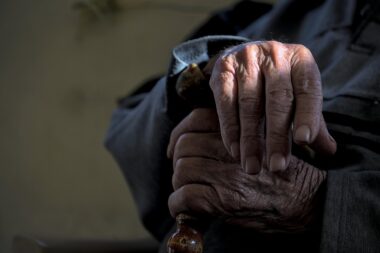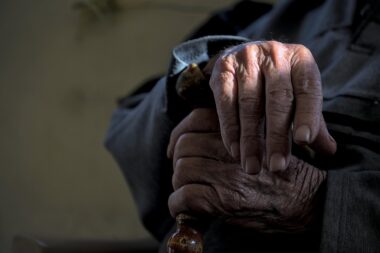Preventing Falls: Strategies for Seniors
As individuals age, maintaining balance and coordination becomes increasingly crucial to prevent falls. It’s essential to understand the effects of aging on the body’s ability to maintain stability. Factors such as muscle strength, vision, and proprioception tend to decline with age. Regular exercises can help mitigate these effects and improve overall balance. Simple activities including walking and yoga can enhance stability and strength. Additionally, participating in balance-specific workouts, like tai chi, can greatly assist older adults in improving their coordination. Safety modifications at home, such as removing tripping hazards, can also make a significant difference. Along with physical activities, seniors should regularly have vision and hearing checks to detect issues early. Combining overall health awareness with balance exercises is vital for maintaining mobility. Encouragement and community support can provide motivation for elderly individuals to engage in these beneficial practices. By equipping seniors with knowledge and tools, they can lead safer, more active lives. Incorporating these strategies is essential for every aging person in fostering independence and well-being.
Physical activity plays a significant role in enhancing balance among seniors. Regular engagement in strength training and flexibility exercises can lead to improved muscle tone and joint flexibility, both of which are key for maintaining balance. Strength training particularly helps in building muscle mass that often diminishes with age. Exercises like squats, lunges, and resistance training are excellent options. For flexibility, incorporating stretching routines during daily activities or as a part of an exercise program helps keep muscles and joints limber. Balance training exercises can significantly reduce the risk of falls by teaching body awareness. Simple practices, such as standing on one leg or walking heel to toe, can promote stability and reduce the fear of falling. Furthermore, joining a local exercise group offers social interaction and accountability. Group exercises also foster a sense of community, encouraging seniors to stay consistent and engaged with their health. Implementing a regular exercise routine that incorporates strength, flexibility, and balance training offers multifaceted benefits. Therefore, encouraging seniors to make these practices part of their daily routine can lead to a healthier, more confident lifestyle.
The environment where seniors live greatly influences their potential for falls. Ensuring that homes are safe is crucial in preventing accidents. Seniors should assess their living spaces for tripping hazards, such as loose rugs, poor lighting, or clutter. All these can create obstacles that negatively affect mobility. Installing grab bars in bathrooms and handrails on stairs can provide support when navigating through challenging areas. Moreover, ensuring that areas are well-lit at all times helps prevent unexpected falls. Using non-slip mats and maintaining clear walkways can help create a safer indoor environment. In addition to these modifications, utilizing mobility aids like canes and walkers may offer crucial support. It’s also beneficial to encourage seniors to wear non-slip footwear to enhance grip. Community resources, such as home assessments and fall prevention programs, can further empower seniors and their families in creating safer living spaces. Residents should educate themselves about available local services that help improve home safety. Community engagement alongside environmental modifications fosters an active conversation about falls, leading to better practices and decrease the risk of accidents where seniors often face daily challenges.
Regular health check-ups are essential for seniors to monitor overall well-being and identify potential issues. Medical professionals can provide valuable guidance regarding medication that may contribute to dizziness or balance problems. Some medications have side effects that can affect mental clarity and coordination. Frequent medication reviews with healthcare providers help ensure that seniors are only taking what they need and that it doesn’t negatively impact their balance. Additionally, chronic conditions such as arthritis, diabetes, or heart-related issues may limit mobility. These health concerns must be properly managed to prevent related complications. Furthermore, encouraging seniors to attend fall prevention classes led by health professionals can empower them with safety strategies. This proactive approach not only addresses health but also mental well-being, as fear of falling can lead to decreased activity. Giving seniors knowledge about their medical conditions fosters empowerment. Support groups may also provide information on additional resources and coping strategies. When seniors feel supported in addressing their health, they are more likely to engage in activities and maintain their independence. Therefore, ensuring regular health evaluations is vital to help seniors live safely and confidently.
The Importance of Nutrition
Proper nutrition is another critical component in preventing falls for seniors. A balanced diet rich in vitamins and minerals supports bone health and muscle strength, crucial for maintaining balance. Foods high in calcium and vitamin D are particularly beneficial for bone density and prevention of fractures. Ensuring adequate protein intake is also essential for muscle repair and growth, which can deteriorate with age. Seniors should aim to consume a variety of fruits, vegetables, whole grains, and lean proteins to stay nourished. Staying hydrated is equally important as dehydration can lead to confusion and dizziness, elevating fall risk. Meal planning can help seniors maintain consistency in their diets; they may benefit from local services that offer nutritious meals tailored to their dietary requirements. Furthermore, family involvement can inspire seniors to cook together or join them for meals, increasing both nutrition and social interaction. Overall, understanding the connection between nutrition and fall prevention enables seniors to make informed dietary choices. By promoting healthy eating, further support can be established in fostering strength, health, and resilience against falls.
Technology offers innovative solutions for fall prevention among seniors. Wearable devices designed to monitor activity and detect falls in real-time can alert caregivers immediately. Items such as fall detection necklaces or smartwatches can foster confidence in seniors as they maintain mobility. Apps designed to promote wellness can encourage regular exercises and reminders for medication, enhancing overall health. Additionally, technology provides opportunities for seniors to connect with loved ones, combating isolation and associated falls risks. There are online classes tailored for seniors that focus on balance and physical exercises; these virtual resources allow seniors to engage from the comfort of home. Encouraging familiarity with technology also leads to independent living and enhances trust in navigating daily activities. Remote consultations with healthcare professionals can further empower seniors to manage their health proactively. Community members can act as tech champions to facilitate digital literacy among older adults. The advantages of technology in enhancing safety and well-being cannot be overlooked. Therefore, the incorporation of innovative tools can greatly enhance the quality of life for seniors, helping them navigate their lives with greater ease and security.
Lastly, raising awareness about falls and prevention strategies among caregivers, families, and community members is crucial. Educating others creates a support network for seniors who face challenges regarding balance and aging. Resources such as brochures, workshops, and public health campaigns can spread essential information about fall prevention. Awareness can lead to collaborative efforts that help improve senior mobility and safety in public spaces. Engaging in community seminars exposes families and caregivers to knowledge about habits that can reduce risk. The more people know about how to help prevent falls, the more effectively they can support their older relatives and friends. Building partnerships with local organizations can also aid in reaching a wider audience and fostering a culture focused on senior safety. Advocating for safe practices not only benefits seniors but contributes to stronger communal bonds. Encouraging discussions about balance and falling should be part of the regular dialogue within families. Each small step towards better awareness helps create environments conducive to older adults’ independence. Ultimately, engaging with such preventative measures builds a robust community focused on safeguarding senors and enhancing their quality of life.
In conclusion, comprehensive strategies exist to prevent falls among seniors, advocating for a proactive approach. Emphasizing balance and coordination helps older adults maintain independence while enhancing overall well-being. Strengthening their physical capabilities through regular exercise and awareness programs ensures that they remain active participants in their communities. Additionally, by fostering healthy environments, monitoring health, and integrating nutrition, families can significantly reduce fall risks. Utilizing technology further supplements these strategies, making safety accessible. To aid in this initiative, it’s essential to cultivate a supportive environment that prioritizes the needs of our elderly population. Community partners and families alike must engage in discussions on resources available. The conversation surrounding seniors’ safety should not only be informative but also respectful. Recognizing seniors as valuable community members drives the essence of these strategies home. Prevention ultimately lies within actionable health plans, informing seniors and caregivers regularly. As awareness grows, it should inspire collective action towards creating safer environments. By fostering a culture dedicated to the well-being of seniors, everyone can contribute to preserving their dignity and independence. In embracing these practices, we not only enhance their lives but also our shared community.





